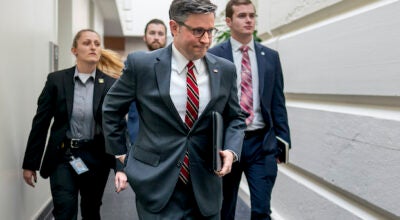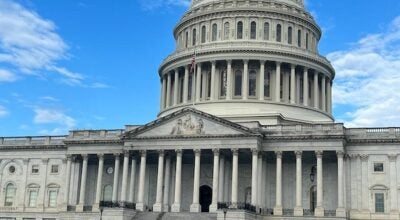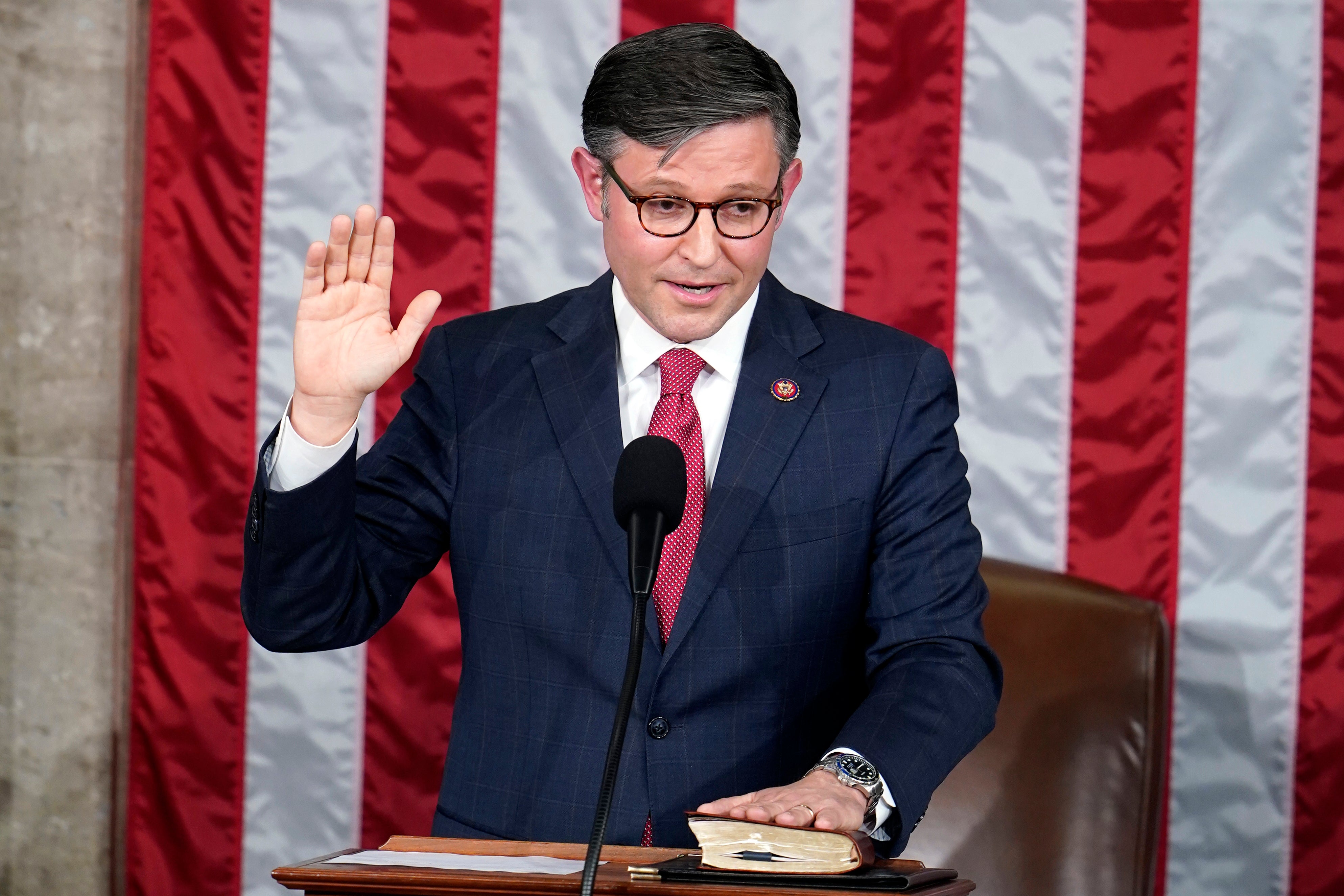Vatican sends message: Pope’s retirement for real
Published 11:54 am Tuesday, February 12, 2013
VATICAN CITY (AP) — The papal ring will be destroyed, along with other powerful emblems of authority, just as they are after a pope’s death. The retiring Pope Benedict XVI will live in a monastery on the edge of the Vatican gardens and will likely even give up his beloved theological writing.
The Vatican went out of its way Tuesday to declare that for Benedict, retirement means just that: Retirement.
With speculation swirling about his future role, the Vatican’s chief spokesman explicitly stated that Benedict will not influence the election of his successor.
And the Rev. Federico Lombardi deepened the sense of finality by saying that after his Feb. 28 abdication, “objects strictly connected” with the papal ministry will be “terminated.” Among these is the papal ring, used as a seal for documents, which is smashed upon a pope’s death.
And while the first papal resignation in 600 years has left behind a vast uncharted territory to navigate — how does one address or even dress a retired pope? — the church sought to send a clear message that Benedict will not be pulling strings from behind the scenes.
“The pope will surely say absolutely nothing about the process of the election,” Lombardi told reporters at a briefing. “He will not interfere in any way.”
The Vatican has already picked out the pope’s future home: A four-story building attached to a monastery on the northern edge of the Vatican gardens where cloistered nuns used to live. It has been under renovation for several months, although only a handful of Vatican officials knew that it would one day be Benedict’s retirement home.
On Tuesday, construction materials littered the front lawn of the house and plastic tubing snaked down from the top floor to a cargo container.
From a new name to this new home to the awkward reality of having a reigning pope and a retired one, the 85-year-old Benedict has plenty of decisions to make.
Benedict said Monday he was stepping down because he simply no longer had the strength in mind or body to carry on. On Tuesday, Lombardi revealed for the first time that the pope has had a pacemaker for years and just had its battery replaced a few months ago.
Although no date for a conclave to choose the next pope has been announced, it must begin within 20 days of his Feb. 28 retirement. That means a new pope will likely be elected by the College of Cardinals by Easter — March 31 this year.
The decision immediately raised questions about what Benedict would be called, where he would live — and how that might affect his successor.
The Vatican’s senior communications adviser, Greg Burke, said Tuesday the fact that Benedict had chosen to live in a monastery is significant.
“It is something that he has wanted to do for a while,” Burke said. “But I think it also suggests that his role is going to be a very quiet one, and that is important so you don’t have a situation of … two different popes at the same time, and one influencing the other.
“I think the obvious thing is when he says retirement, it really means retiring,” he said.
The pope’s brother, Monsignor Georg Ratzinger, told reporters in Germany on Tuesday that Benedict was planning to stay out of the public eye and will probably even stop writing — one of the favorite pursuits of the brainy theologian.
As for the pope’s new name, Burke said Benedict would most likely be referred to as “Bishop of Rome, emeritus” as opposed to “Pope Emeritus.” Lombardi also said Benedict would take some kind of “emeritus” title.
Other Vatican officials said it would probably be up to the next pope to decide Benedict’s new title, and wouldn’t exclude that he might still be called “Your Holiness” as a courtesy, much as retired presidents are often referred to as “President.” It was not even clear whether the retired pope will retain the name Benedict, or revert to being called Joseph Ratzinger again.
Benedict had been widely expected to issue his fourth encyclical, concerning faith, before Easter. Lombardi said the encyclical would not be ready before Benedict’s retirement.
Already, Benedict was changing his schedule to take into account his new circumstances. He had been scheduled to go to a church on Rome’s Aventine hill for the annual Ash Wednesday service starting the church’s Lenten season this week; the service will take place in St. Peter’s Basilica in Rome instead.
Lombardi said a larger space was needed to accommodate the throngs expected to greet the outgoing pope — but observers suspect the Vatican may have also wanted to spare a tiring Benedict from the crowds along the hill.
Immediately after his resignation, Benedict will spend some time at the papal summer retreat in Castel Gandolfo, overlooking Lake Albano in the hills south of Rome where he has spent his summer vacations reading and writing. By March, the weather may start to warm up and he should be able to enjoy the gardens and feed the goldfish in a pond near a statue of the Madonna where he often liked to visit.
If he’s interested, he can do some star gazing; The Vatican Observatory is located inside the palazzo, complete with a telescope and a world-class collection of meteorites.
Lombardi said Benedict would eventually return to the Vatican and live at a monastery inside the Vatican gardens. Asked if he might like to go somewhere else, Lombardi said the pope would feel “much safer” inside the Vatican walls.
The Mater Ecclesiae monastery was built in 1992 on the site of a former residence for the Vatican’s gardeners. Pope John Paul II had wanted a residence inside the Vatican walls to host contemplative religious orders, and over the years several different orders have come for spells of a few years, said Giovanni Maria Vian, editor of the Vatican newspaper L’Osservatore Romano.
The last such order of nuns left the residence in October, and renovation work began immediately afterward, Vian told The Associated Press. He said Benedict had decided to retire last April after his taxing but exhilarating trip to Mexico and Cuba in March.
“Many people thought they were doing the renovations for new sisters, but it was for the pope,” Vian said. He said only a few people knew of the pope’s plans, yet the secret didn’t get out.
“That shows the seriousness and loyalty of the few senior Holy See officials who were aware,” he said — a reference to the 2012 scandal over leaked papal documents by the pope’s own butler.
Benedict has visited the monastery, with its own chapel on the grounds, a handful of times over the years.
There’s a garden right outside the front door, where the nuns living there would tend to the lemon and orange trees as well as the roses, which are used in liturgical ceremonies or sent as gifts to the pope. No chemical fertilizers are used, just organic fertilizer sent straight from the gardens at Castel Gandolfo.
Georg Ratzinger confirmed that his brother has no intention of returning to live in his native Bavaria.
“You don’t transplant an old tree,” Ratzinger said.
Media gather in front of St. Peter’s Basilica





